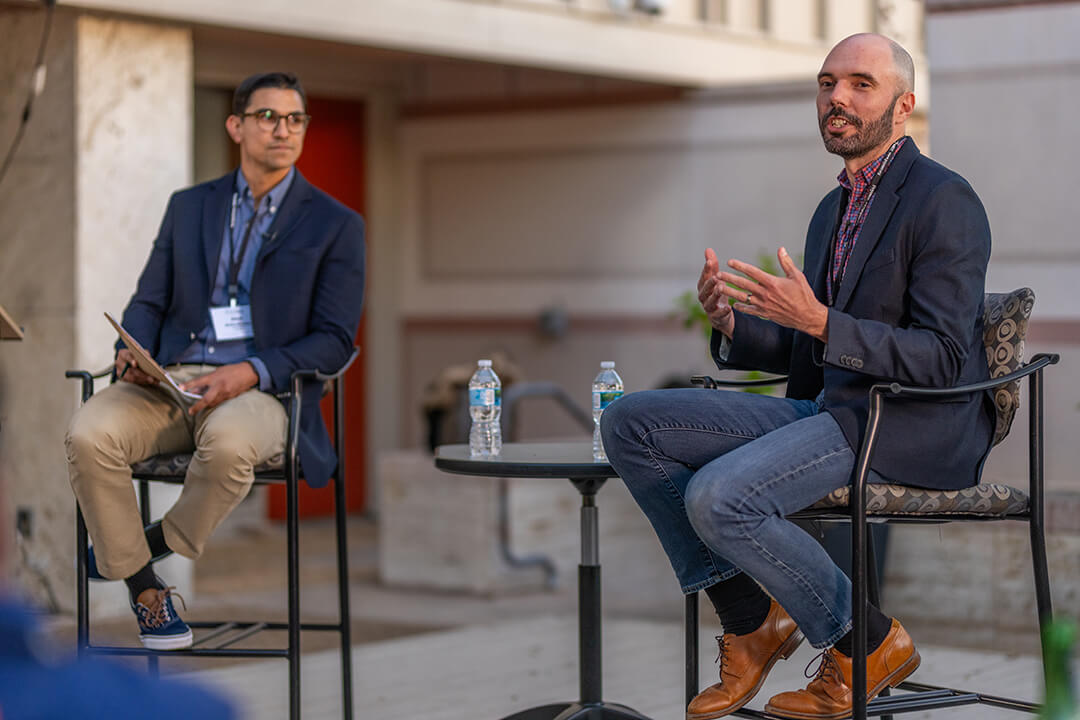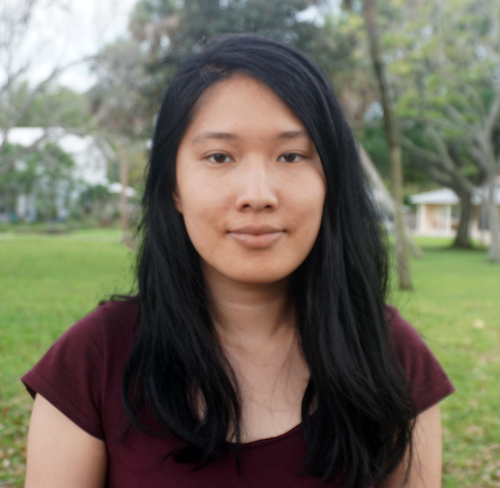Artificial intelligence has become a buzz phrase in newsrooms over the past year as everyone from top executives to beat reporters grapple with the implications of the advancing technology. But while some tout it as the savior of journalism and others view it as the beginning of the end, Washington Post reporter Drew Harwell takes a more measured approach.
“I say it’s like a karaoke machine — it can be used for good and evil.”
Harwell, who covers AI and the influence of algorithms on daily life, has watched the technology rapidly accelerate in the six years he’s been on the beat. But he can also see its flaws, the “seams.” In a conversation with MediaWise director Alex Mahadevan at Poynter’s annual meeting with its advisory board late February, Harwell encouraged journalists to familiarize themselves with the technology.
“I think it’s worth all of us as journalists, people who care about journalism, to really use these tools because this stuff is taking away that vector of understanding in terms of audio, video, imagery,” Harwell said. “You can’t trust your eyes anymore when you look at this stuff because it’s so lifelike.”
Though Harwell sometimes experiments with AI tools, he doesn’t incorporate them into his reporting and writing process. AI can’t replicate good journalism, he said. It can’t knock on doors, and the content generative AI tools produce tends toward boilerplate.
“I think the more we’ll be seeing AI-generated stuff, the more we will appreciate real, human, creative work,” Harwell said. “There’s nothing really replicating good, human writing.”
Still, Harwell acknowledged that AI could help augment journalism. He highlighted the work of The New York Times’ visual investigations team, which partnered with an AI company to track and analyze a high-altitude Chinese balloon last year. At the Post, the newsroom uses machine learning to test different headlines for stories and track which headline performs the best. Other uses of AI — such as translating stories into different languages or automatically generating transcripts for podcasts — could help journalists reach more people, Harwell said.
Newsroom experiments with generative AI have already exposed major flaws. AI-generated stories have made headlines for including plagiarized content and inaccuracies. Concerns over plagiarism have led some news outlets, like The New York Times and The Intercept, to sue AI companies for copyright infringement. Those issues have arisen in part because tech has largely been allowed to police itself, Harwell said.
“We need to clear our framework of what’s acceptable because at this point, the AI companies have just done what they thought was right,” Harwell told Poynter in a separate interview. “They just took everything off the internet, put it in a big database and started tinkering with it because that was legal in their minds.”
In addition to covering AI, Harwell has reported on social media platforms and the creator economy. It’s an area that often isn’t treated seriously by news outlets or audiences but deserves attention, Harwell said.
“This is the top career aspiration for a lot of young people, and it’s something that’s totally unregulated,” he said. “You should care about these people, whether you agree with them or not.”
Creators are essentially media businesses, Harwell said. They get attention and then monetize that attention in what is a very precarious industry. Many work long hours without insurance, sick days or safety nets. Stories about Twitch streamers or OnlyFans models are oftentimes treated as punchlines when in reality, they’re labor stories, Harwell said.
“We as people tend to look down on influencers because they do seem sort of frivolous. But they build audiences, they build products, they are thoughtful about what they make — they have to be just to survive on a very chaotic internet,” Harwell told Poynter. “We can learn a lot from how they’ve developed.”
To fight churn and keep people engaged, content creators try to establish relationships with audiences that are not dependent on individual platforms, Harwell said. Their followers will go to them, no matter whether they’re on YouTube or Instagram or somewhere else. That’s something journalists and news outlets can try to replicate, he said.
Harwell has experienced the precarity of social media platforms himself. He was one of the journalists billionaire Elon Musk suspended on Twitter in 2022 for “doxxing.” (Harwell had reported on an account that tracks Musk’s private jet based on publicly available data.) Musk’s takeover of Twitter, now X, made Harwell realize that he couldn’t depend on social media traffic forever and that he needed to build his own means of distribution. It’s one of the reasons he has a newsletter where he can send his stories directly to subscribers.
“We’re dependent on all these big companies that pull the rug out from under us (journalists),” Harwell said. “I hope that the future will look more like we own the work rather than depending on some other platform.”







